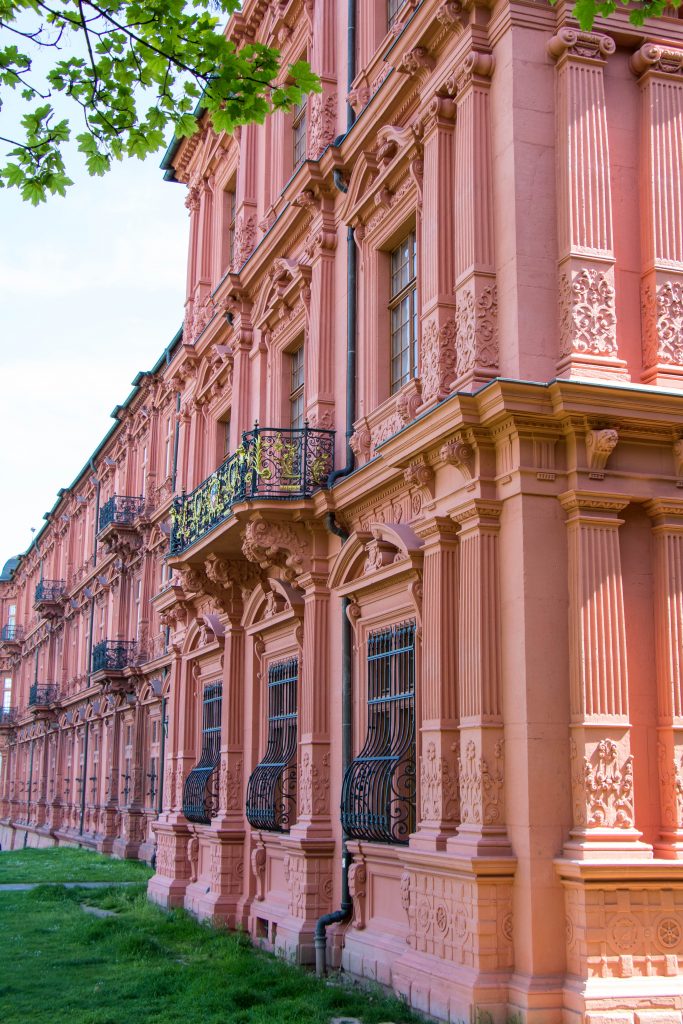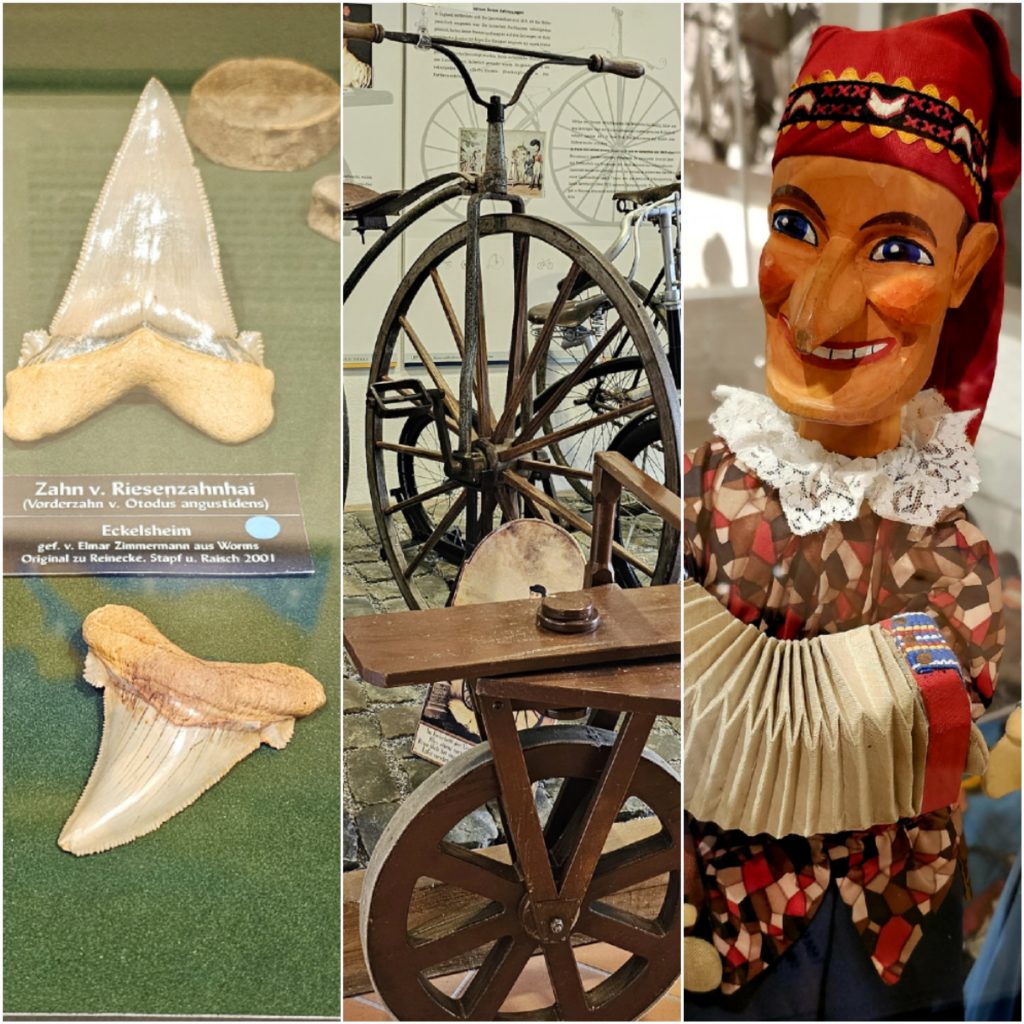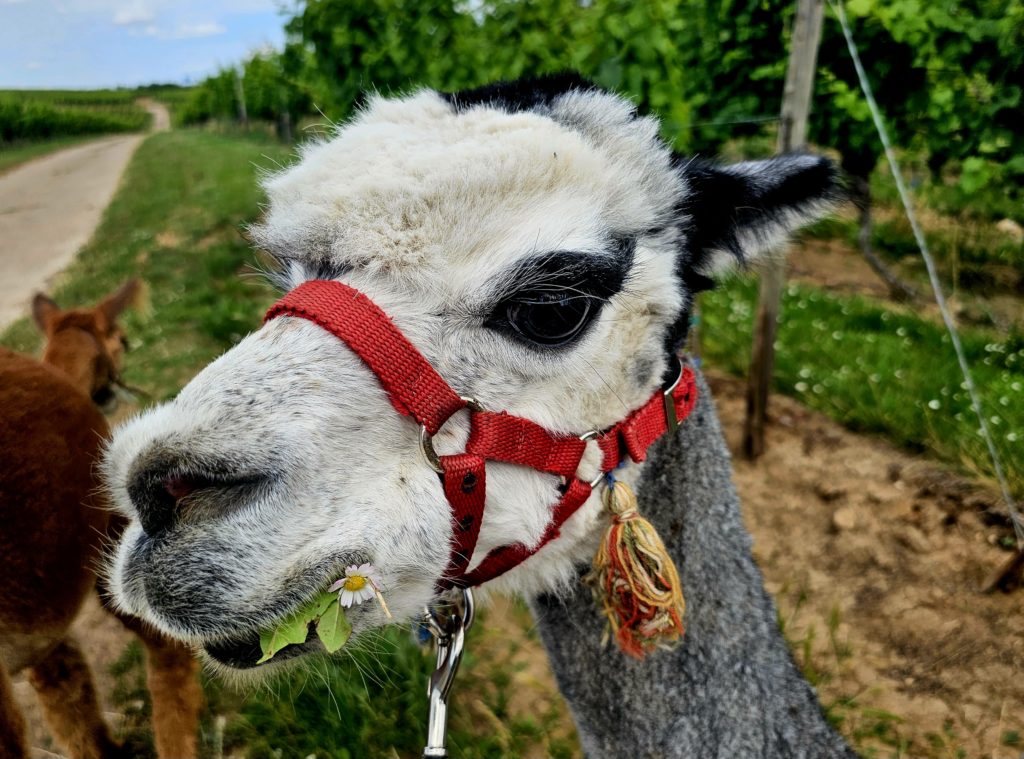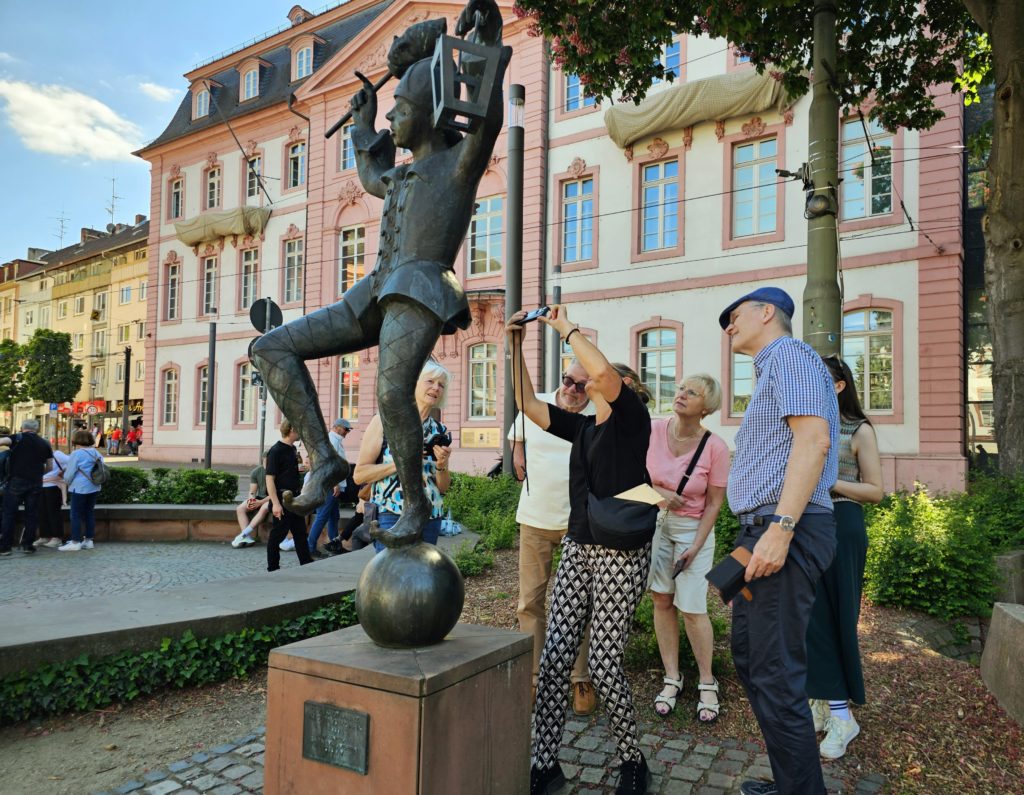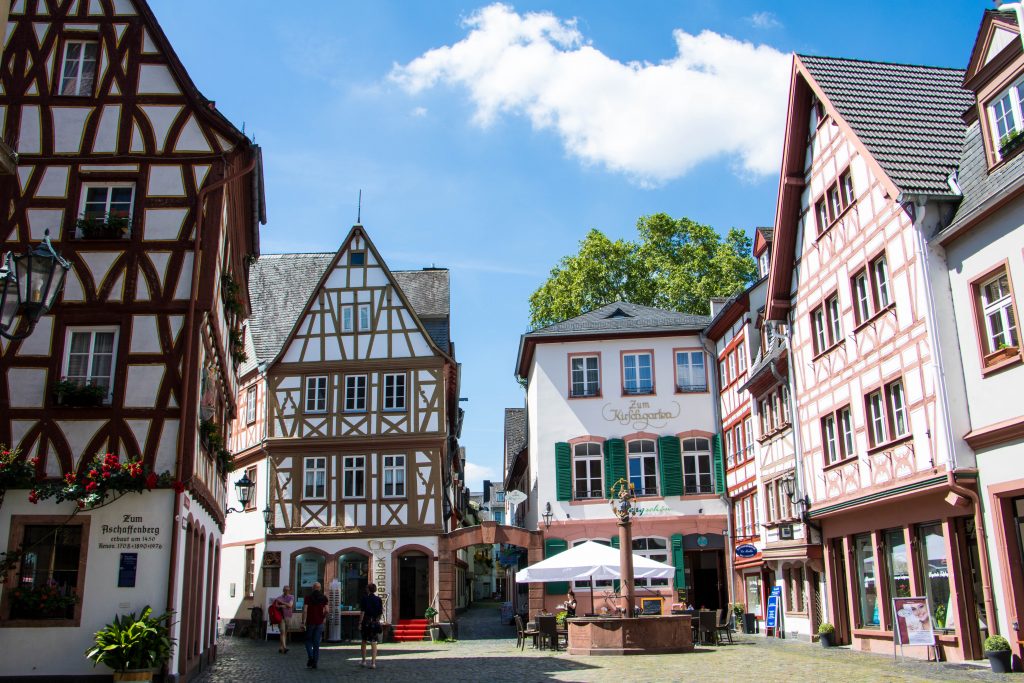
We followed the most exciting traces from the center, through the old town, up the Stefansberg to the new town - always accompanied by exciting personalities like Johannes Gutenberg or Marc Chagall.
In the Mainz Cathedral
Right in the heart of Mainz, at the lively market square, we begin our walk through the capital of Rhineland-Palatinate. Our eyes immediately fall on the imposing landmark made of red sandstone, which watches over the hustle and bustle at its feet.
The Mainz Cathedral St. Martin has shaped this city since its foundation stone was laid in the 10th century and has witnessed many things: seven royal coronations, for example, but also seven fires.
We step through the portal and all at once the buzz of voices in the marketplace dies away. Mainz Cathedral is an oasis of peace. We walk through the large interior of the church, which was modeled after the Basilica of St. Peter in Rome.
Also worth seeing is the two-story cloister from the 15th century with its idyllic garden. The canons used to live in the adjacent buildings, which today house the Episcopal Cathedral and Diocesan Museum.
At the Gutenberg Museum
We stroll a few meters further to Liebfrauenplatz and stand directly in front of the magnificent facade of the Gutenberg Museum. Anyone interested in Mainz's history and identity cannot get past one gentleman: Johannes Gutenberg. The inventor of movable type printing is the city's most important son, so it is hardly surprising that a museum is dedicated to him and his millennium legacy.
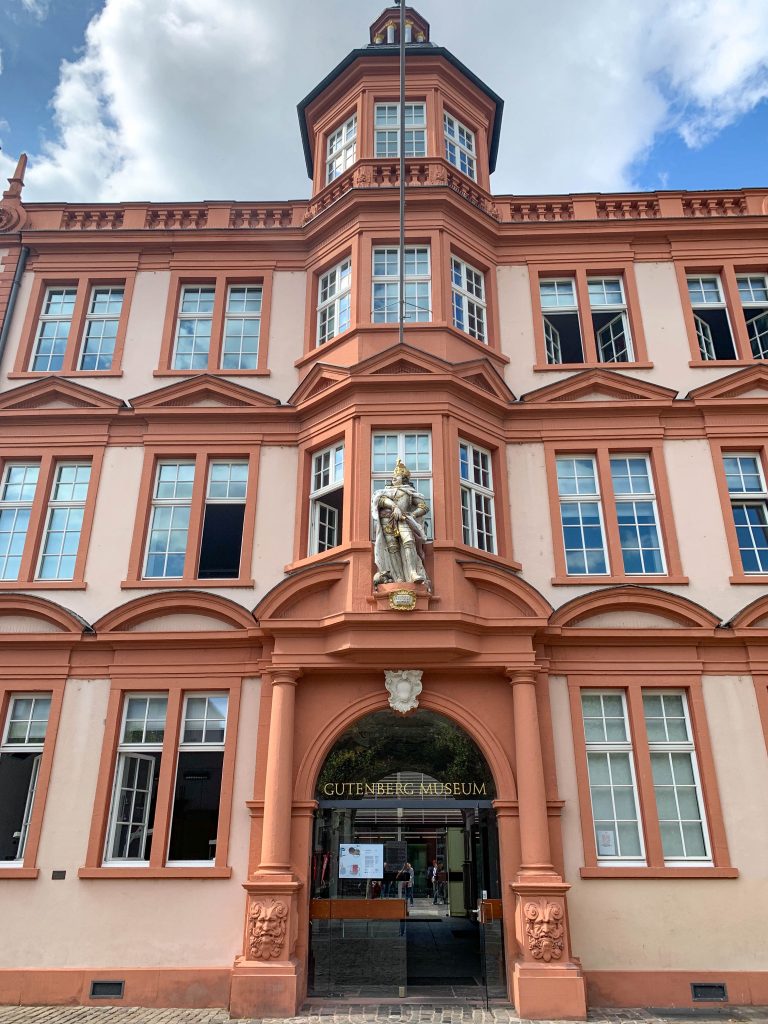
The Gutenberg Museum in the House of the Roman Emperor
In this carefully curated exhibition, we delve into the world of type culture. We look at rare printing presses and learn that Johannes Gutenberg - contrary to what is always portrayed - probably did not wear a beard at all. We are particularly pleased to be able to see two original Gutenberg Bibles from the 15th century, which are presented in a darkened, walk-in vault due to their sensitivity to light.
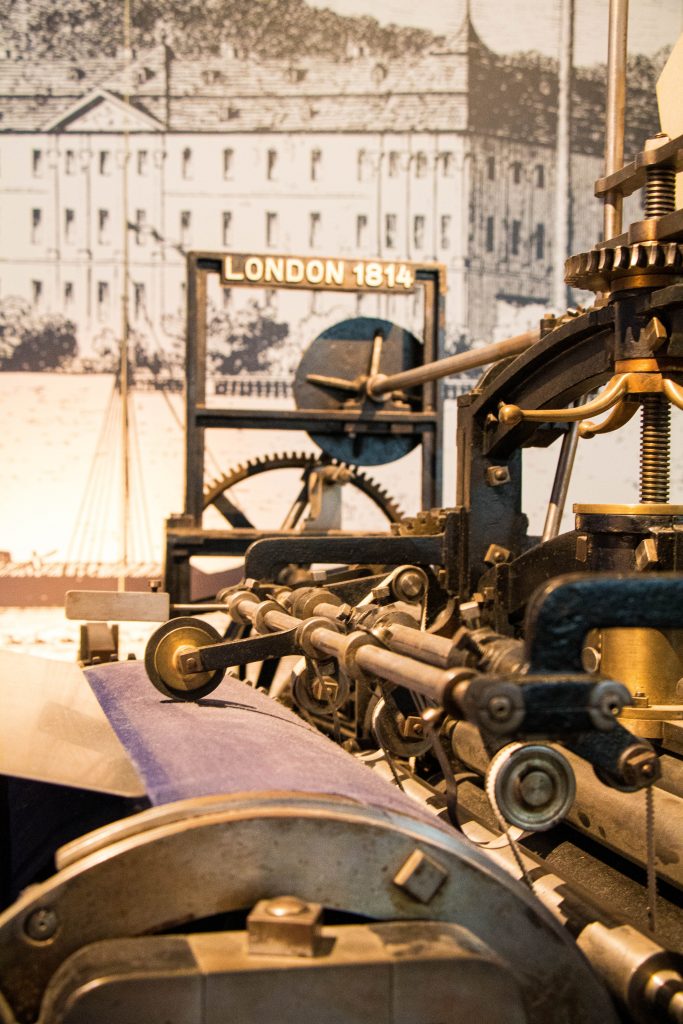
Inspired by our newly acquired knowledge of work steps and printing techniques, we want to get to work ourselves. And where would we be in better hands than at the museum's own print store? As soon as you enter, you can feel the creativity of this place. Finished prints hang from the ceilings, there is a smell of paint and the shelves bend under tools, letters and paper. A great atmosphere!
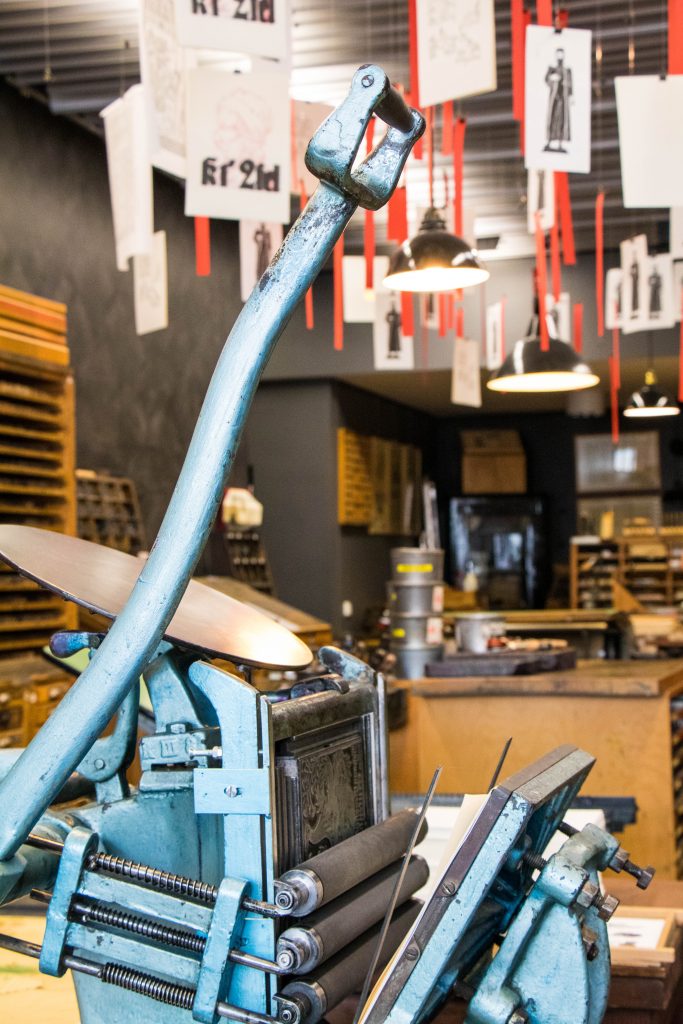
Under expert guidance, we make our very own print. The choice of motifs is almost endless, but we decided on a portrait of Gutenberg (with a beard, by the way). Thus, we hold a real piece of Mainz city history in our hands.
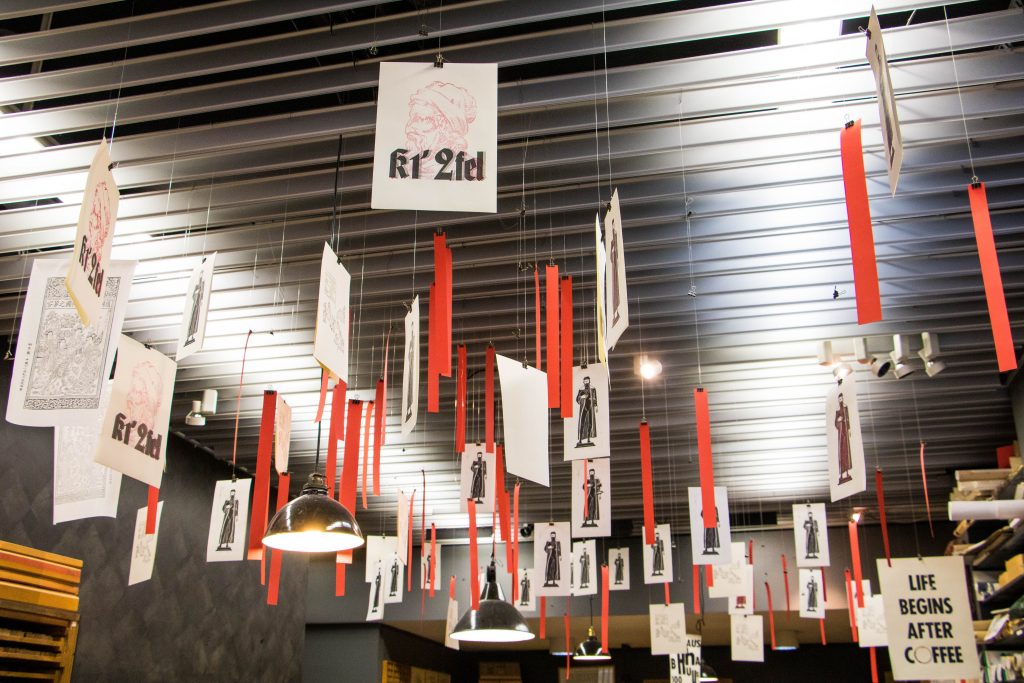
Along the Augustinerstraße
The city walk takes us further in the direction of Augustinerstraße. With its historic half-timbered houses, small boutiques, cafés and wine taverns, it is a real jewel in the Mainz old town. This has not changed much since the Middle Ages, because even then life pulsated here.
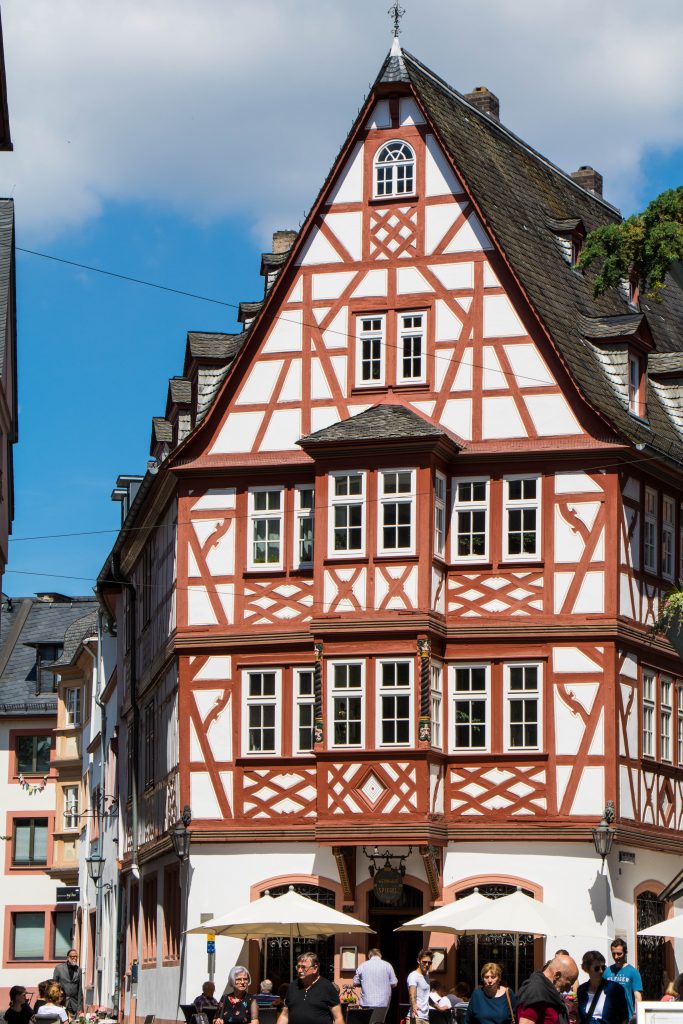
The Cherry Orchard is a small, picturesque square bordering Augustinerstrasse. Here we meet Johannes Gutenberg again, albeit indirectly. The "House Zum Aschaffenberg" is the oldest surviving half-timbered house in the town and once served as a guarantee for a loan taken out by a relative for the printer and his endeavors.
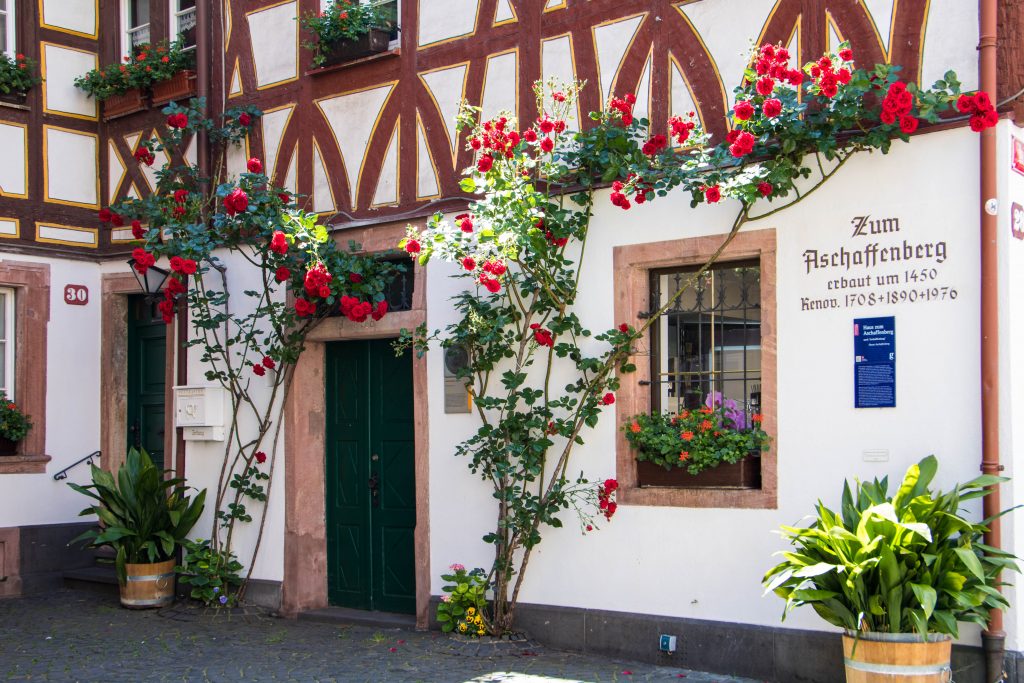
So completely different from the comparatively plain Mainz Cathedral is the Augustinian Church. In the baroque church from the 18th century, the focus is unmistakably on opulence with a love of detail. In the impressive church interior, we let ceiling paintings, wooden figures and lots of gold have an effect on us. The elector's intention at the time, not to build a "peasant church," was successful, we would say.
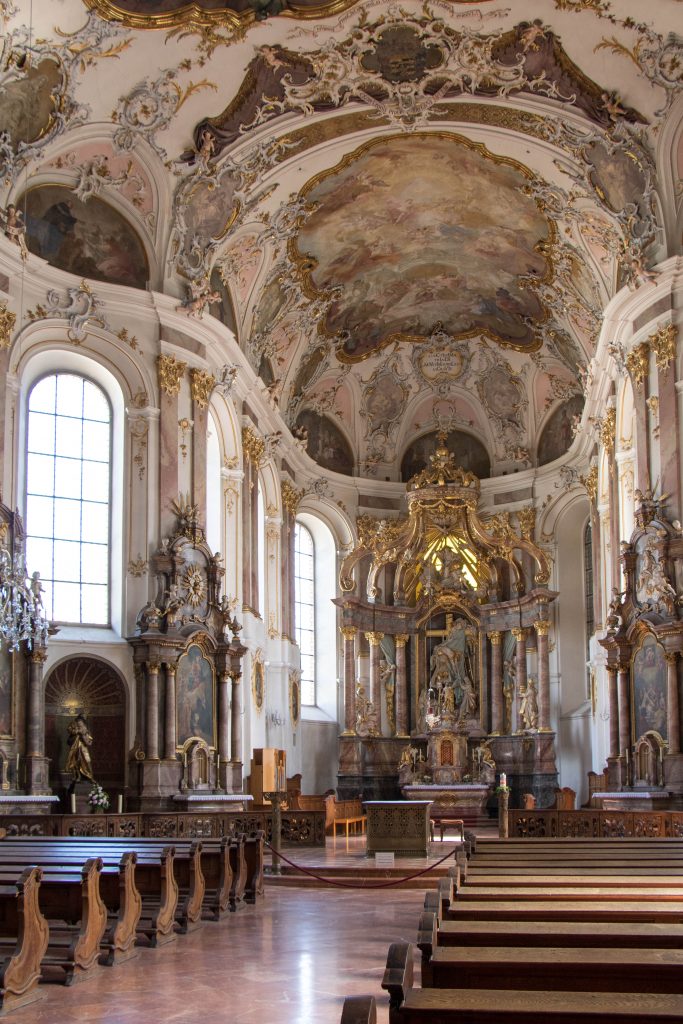
In St. Stephen's
Now things are looking up! On the Stefansberg, the highest elevation of the city, stands the Gothic Parish Church of St. Stephen. Again we dive into another chapter of Mainz's city history, one that goes back less time. Like so many historic buildings, St. Stephen's was badly damaged during World War II. In the course of extensive restoration, a strong mark was made in the 1970s.
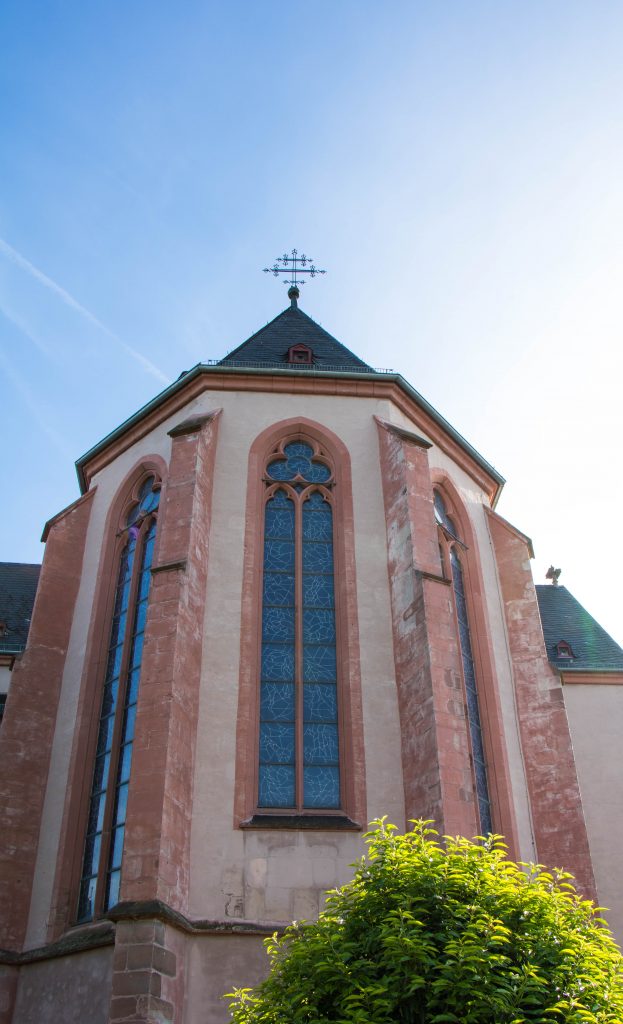
At the request of the priest at the time, a monument to German-French friendship and Christian-Jewish solidarity was created in the church. The world-famous Jewish artist Marc Chagall designed a total of nine church windows, which have since bathed the interior in a romantic blue light. They are the only windows he ever created for a German church.
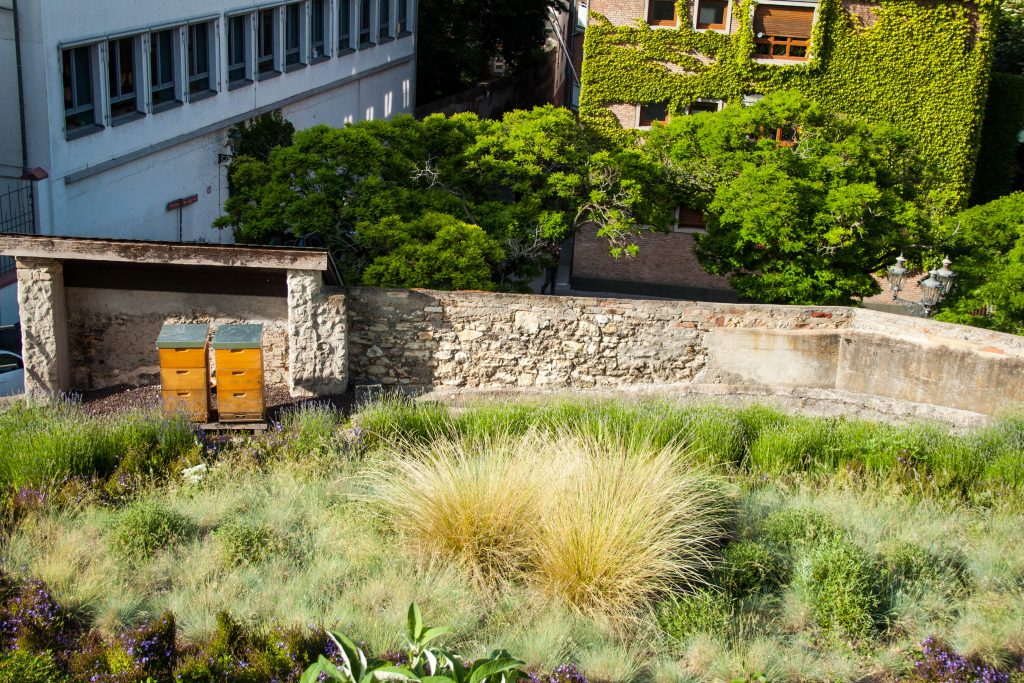
A little below St. Stephen's, in the middle of a green oasis, we find a bench and enjoy the little break. It hums and buzzes, the insects are as busy here as the people in the marketplace before.
At the ruin of St. Christopher
We leave the Stefansberg behind us and walk across Gutenbergplatz with the famous Gutenberg monument in the direction of Mainzer Neustadt. On the way we pass the Karmeliterplatz and with it the ruins of the early Gothic Parish Church of St. Christopher.
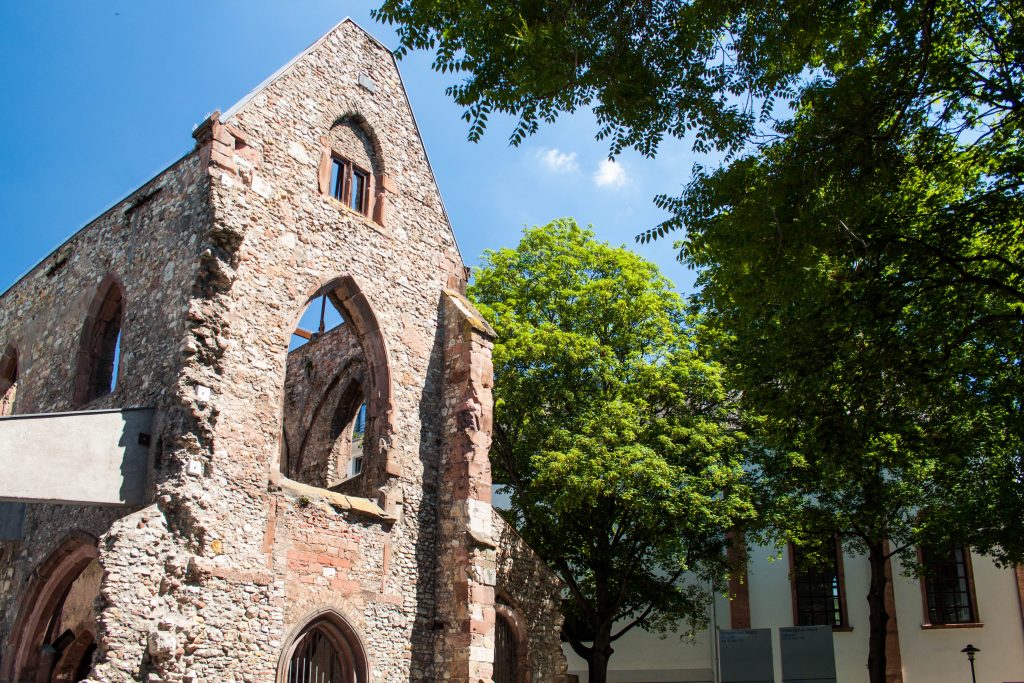
This church was also heavily destroyed during World War II, but unlike St. Stephen's it was not rebuilt. In the 1960s, St. Christopher was converted into a memorial instead. Since then, it has commemorated the horrors of National Socialism and the destruction of the city until the end of the war.
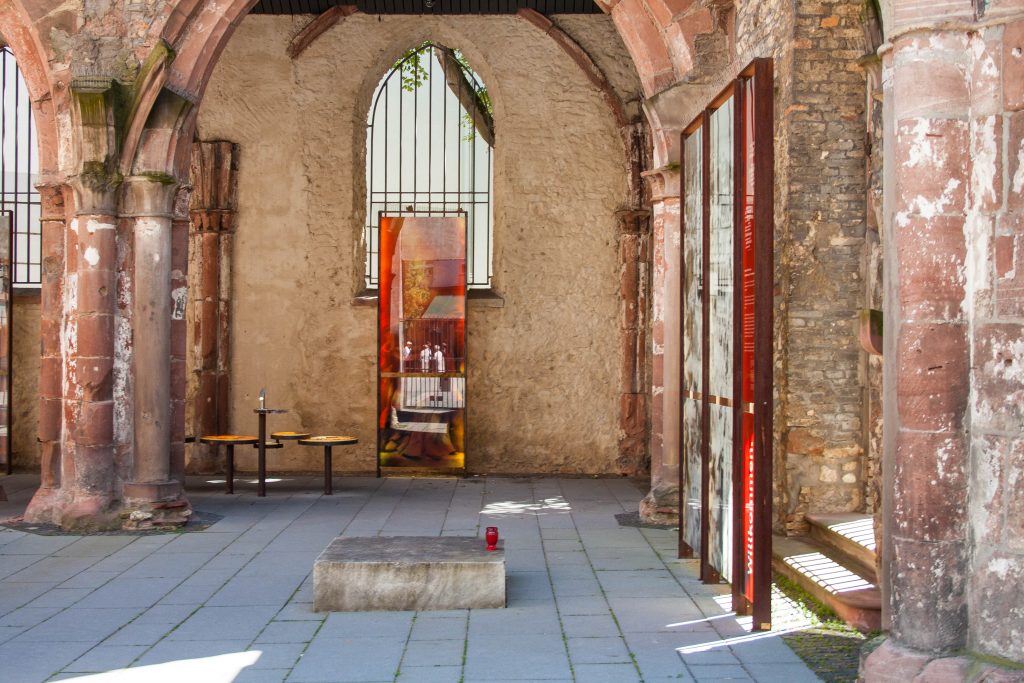
But we also meet an old acquaintance here again. It is believed that Johannes Gutenberg was baptized in this church. His birthplace, which no longer exists today, stood in the immediate vicinity. The suspicion is obvious.
In front of the synagogue
One of the most eventful chapters in Mainz's history is that of the Jewish community. It is one of the oldest in all of Germany, with the earliest traces dating back to the 10th century.
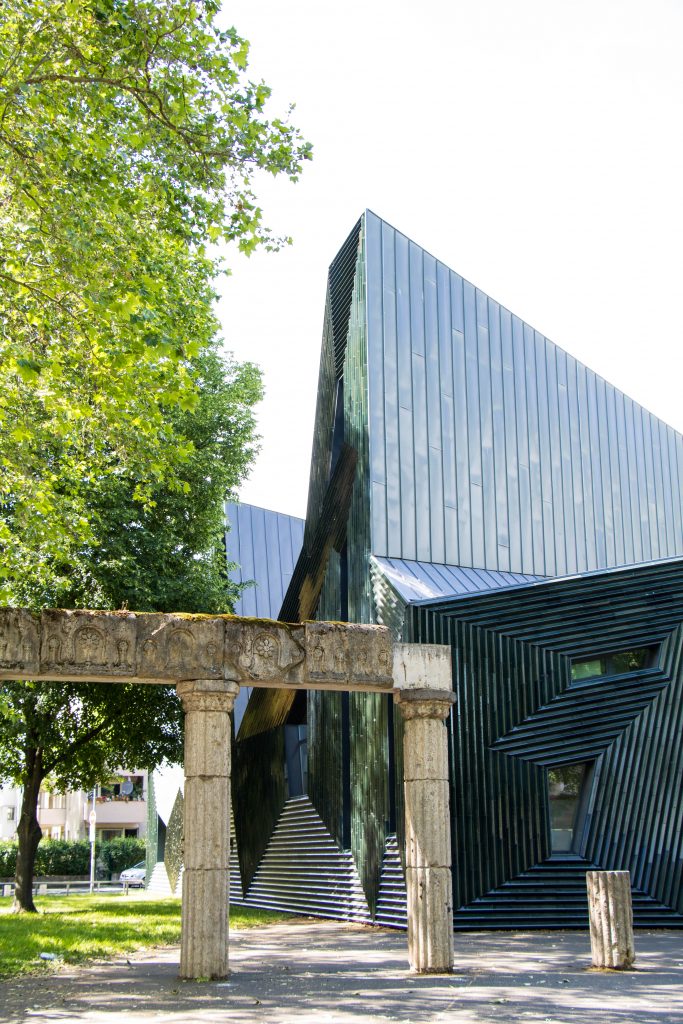
In the heart of the new town we stand in front of the truly impressive new synagogue, which was built and inaugurated in 2010 exactly where the old main synagogue was looted and destroyed on the night of the pogroms in 1938.
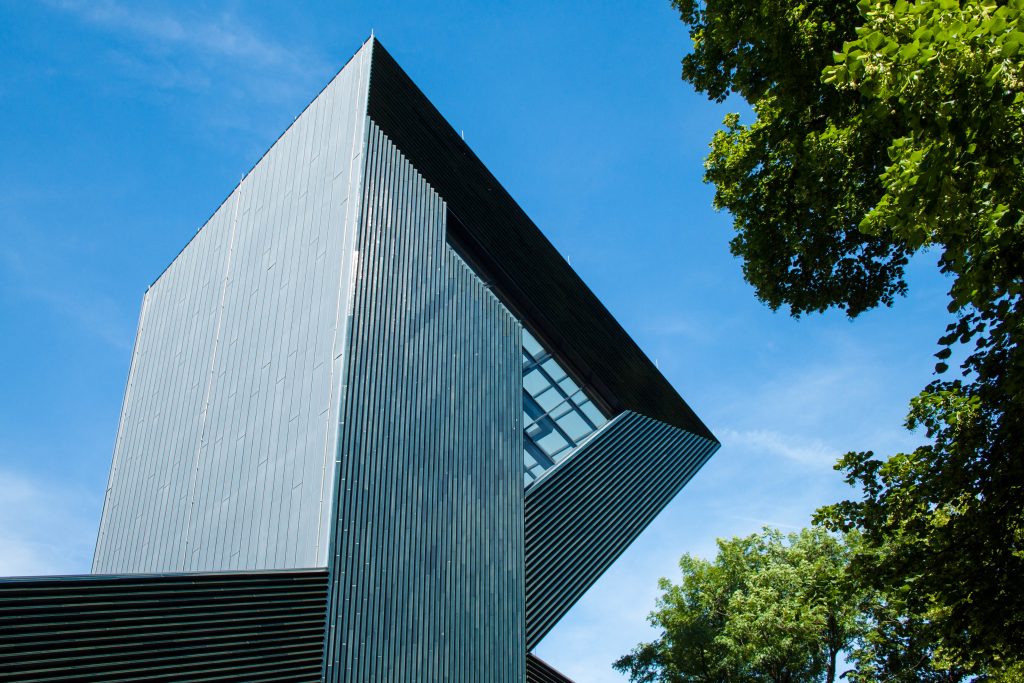
Its architecture is fascinating. The unusual shape of the house of worship symbolizes Hebrew letters of the Jewish liturgical blessing "Kedusha". On the forecourt we pass through an arch of columns. This only preserved element of the old synagogue forms a strong contrast, but also a bridge between the past and the present.
In the Electoral Palace
Our walk in the footsteps of Mainz's city history ends in front of the Electoral palace. It is one of the most beautiful Renaissance buildings in Europe and makes a splendid impression with its sandstone red color and the neat facade! In the past, the archbishops of Mainz resided here, who were also electors in this function.
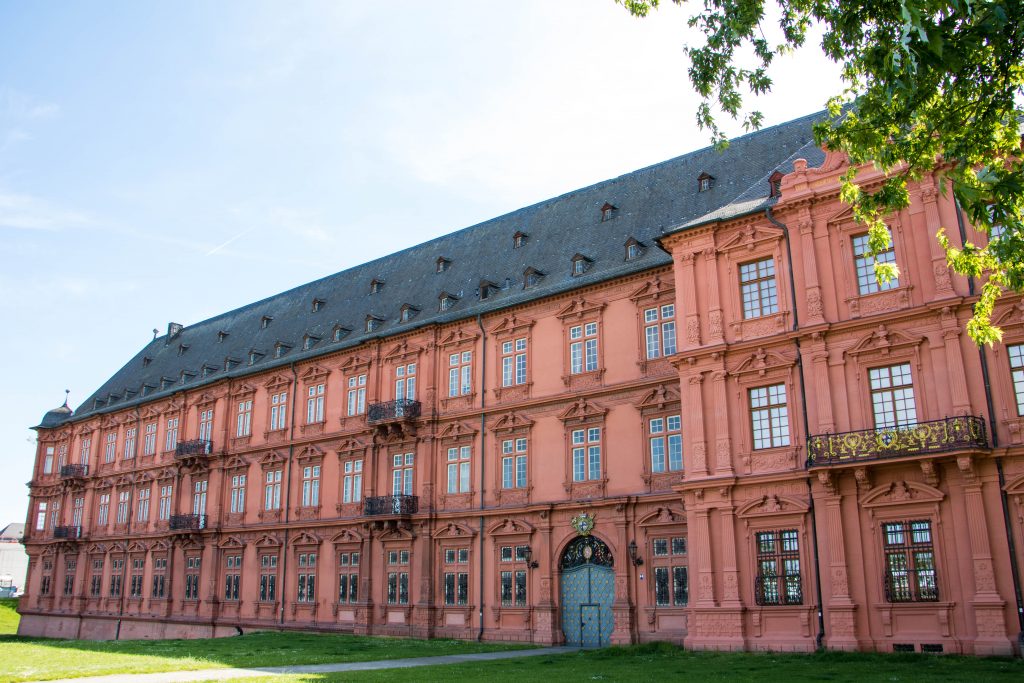
Today, the television show "Mainz bleibt Mainz, wie es singt und lacht" (Mainz remains Mainz, as it sings and laughs) takes place here every year. This is also a piece of Mainz city history that can no longer be imagined without.
